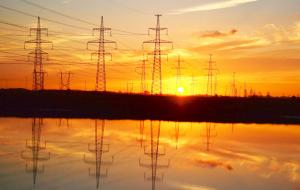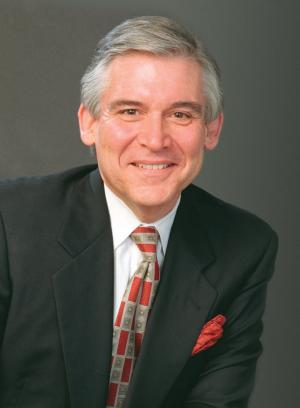Looking back on my 45 years in the energy sector.
Roy Palk is senior energy advisor for the national law firm LeClairRyan, and works out of the firm’s office in Glen Allen, Virginia. Contact him at roy.palk@leclairryan.com.
In 1970 when I joined Tri County Electric Membership Corp., an electric cooperative served by the Tennessee Valley Authority (TVA), the energy sector was poised for strong growth. Compared to today, it was a relatively simple business.

Back then, rates were cheap just about everywhere. The retail kilowatt-hour cost could run less than a penny at the bottom end of the TVA's rate structure. To cover debt service, the more kilowatt-hours you could sell, the better, so rolling out infrastructure was the real challenge.
Back then, there were still people in Appalachia whose small hamlets lacked power. In many cases, they were thrilled at the sight of TVA transmission lines and power poles moving toward them. And of course, everybody knew where that power came from - either from a hydroelectric dam or a rich vein of coal.
But the pace of change quickened considerably over my next 17 years at two different TVA-supplied electric distribution cooperatives. As you might expect, the onset of federal environmental regulations was the start of it all.
Both the Environmental Protection Agency and the Clean Air Act arrived during my first year on the job in 1970. Two years later, Congress passed sweeping amendments to the Federal Water Pollution Control Act of 1948, and the Clean Water Act was born.
 "Today’s changes require open- mindedness … a willingness to let go of out-of-date-thinking." - Roy Palk
"Today’s changes require open- mindedness … a willingness to let go of out-of-date-thinking." - Roy Palk
For a couple of decades thereafter, coal-fired plants continued to be the norm, albeit with certain compliance-related modifications such as taller emissions stacks. If you were to graph the changes during this era, the slope would head gradually upward, befitting the industry's general stability.
Regulations were tightening in the 1990s when I became assistant general manager (and corporate counsel) of the National Rural Electric Cooperative Association and, later, president and CEO of the East Kentucky Power Cooperative. While the expense was considerable, next-generation scrubbers and precipitators allowed many of the older, coal-fired plants to continue to operate despite the tightening regulatory noose.
Other plants even made due using low-sulfur coal, no modifications required. Meanwhile, newer, more efficient plants began coming online with lower-emission technologies integrated from the outset.
By the mid-2000s, the subject of climate change was becoming increasingly important to the national dialog. For the industry, this was a true turning point. More and more, we started to hear the term "dirty coal." With dwindling supplies in central Appalachia, which was such a big supplier to the Midwest and Southeast, coal was becoming more expensive to mine.
All of this amounted to a kind of tailwind for horizontal drilling and today's ramped-up natural gas production. Thanks to the greater supply and growing stability of the natural gas market, the United States began the process of "doubling down" on natural gas as a power source.
Meanwhile, the energy sector experienced a burst of innovation as technology startups, university researchers and others began to push the envelope on the likes of solar, wind, biogas, waste wood and more. With that, we entered our current era, which brought with it a raft of questions and issues. Here are some of them:
- Natural Gas Price Uncertainty
- The Retreat from Coal
- The Customer Push for Solar
- The High Cost of Green.
Gas Prices
With plans to phase out coal to the greatest possible extent, demand is growing globally for natural gas. As we move headlong toward overreliance on this power source, one cannot help but ask the question, "How long until we are trapped with high natural gas prices?"
The best measure here is simply to look at what kinds of long-term contracts the gas companies are willing to sign. Remember when coal contracts could be locked in at the same rate for 10 or even 20 years? We see nothing like this in natural gas. The operative assumption is that prices are headed skyward.
Coal Retirements
With the closure of coal plants, the layman assumes that these legacy locations can become sites for new, cleaner natural-gas plants. Often, however, that is simply not true, because the site has no gas line supplying it. And, of course, changes in the locations of power plants also stand to change the required transmission configurations.
Utilities continue to face an uphill battle as they seek to explain these realities to those who so badly want coal to be ancient history. The so-called Clean Power Plan highlights the possibility of our society setting coal-reduction goals that are rooted, not in realism, but in idealism. That is a danger the industry must take seriously.
Activist Customers
From a cost perspective, today's utilities must plan their generation mixes to include the right proportion of coal, gas, solar, wind and other renewables. However, cost is no longer the only concern.
Back in the 1970s, customers cared about two things - having a steady supply of electricity, and not paying too much for it. Now, they continue to get more involved in policymaking through their legislatures, local boards of directors, government agencies and other organizations. They are expressing their opinions about the environment quite loudly, and utilities have been forced to react.
Nothing exemplifies this trend more than the questions surrounding solar. Should utilities impose fees to stem the tide of behind-the-meter solar, or instead try to get ahead of the curve by leasing residential and commercial customer rooftops for solar arrays?
For the Los Angeles Department of Water and Power (LADWP), the answer is the latter: According to published reports, LADWP aims to launch a community solar program that could grow to 40 MW by 2020. That would make for one of the largest programs of its kind in the country.
The plan, which includes rooftop-leasing deals, represents just part of what a spokesman describes as a "full package" of new solar options for LADWP customers. The program reportedly includes options for low-income customers.
Managing Rate Shock
Earlier this year, Florida Power & Light announced plans to construct the country's biggest utility solar array. The $400 million facility in Manatee County will boast 338,000 solar panels and produce 74.5 MW of electricity, enough to power 13,500 homes for a year. But big investments like this highlight the reality that our regulations are still designed to keep utilities from overbuilding, because this could spike rates on the consumers they serve.
Factoring in the need to meet the demands of constituents and governments for greener power is, in other words, not a part of these older mandates. How, then, do regulators justify approving higher-cost installations?
Legislators and regulators are now under the gun to make sure the regulatory scheme keeps pace with the fast-evolving energy sector. Our existing rules and regulations need to be updated.
So what have we learned over these past 45 years?
If the utility model I knew in 1970 was a centimeter wide, today it is a meter wide at least. Fortunately, all of these changes bring with them substantial opportunities. To capitalize on those opportunities, however, requires open-mindedness - a willingness to let go of out-of-date thinking.
Once you decide you really need to get out of that box, how should your thought process change? As I see it, listening to the consumer is paramount. Whether you are a municipal, cooperative or investor-owned utility, the consumer ultimately has the club. Consumers influence policymakers, regulators and legislators in fundamental ways. We should listen to them.
By diving into today's more diverse energy sector and embracing change, utilities stand to benefit over the long term. This is precisely why I am so excited about the future, even if I do occasionally look back wistfully on the past.
Lead art © Can Stock Photo Inc. / konstantinks



